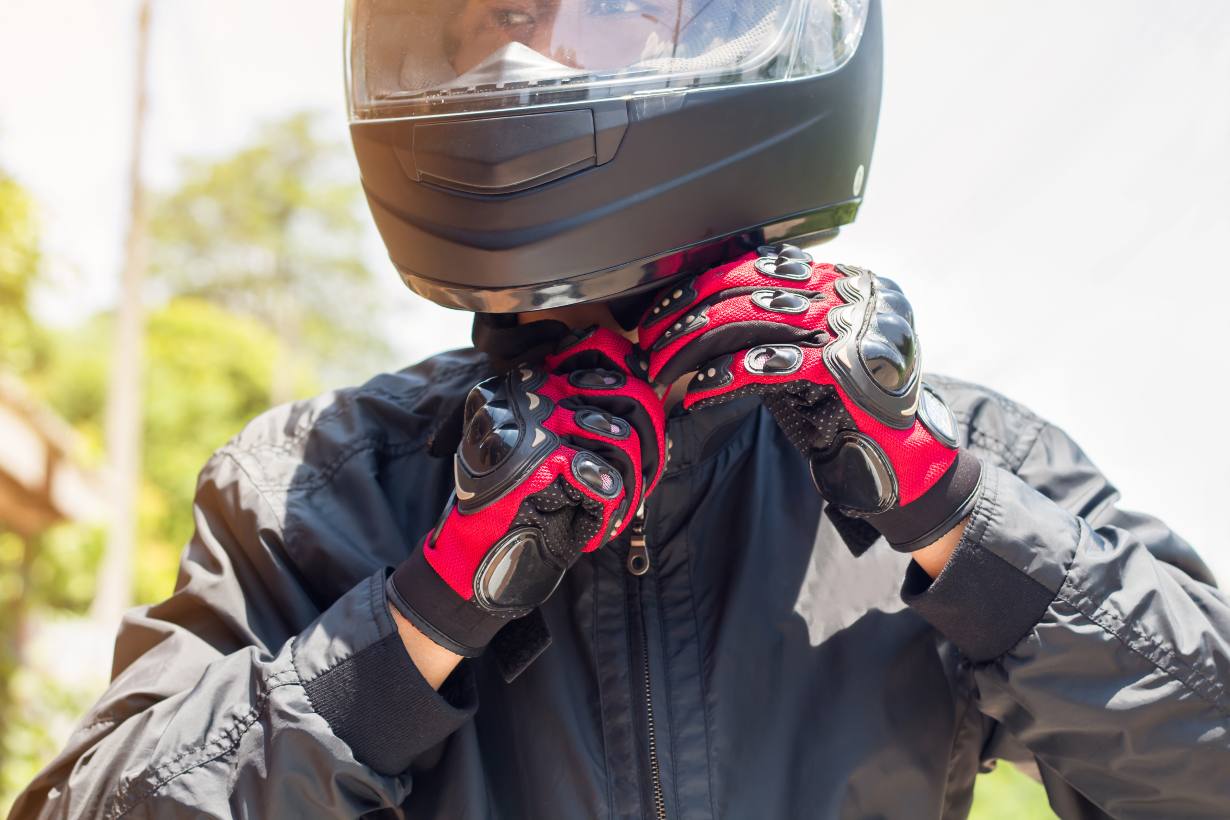Your helmet is one of the most important pieces of protective gear, whether you’re a motorcyclist, cyclist, or sports enthusiast. Proper care and maintenance can extend your helmet’s life and ensure it provides maximum protection when you need it most.
This guide offers essential tips on how to clean, store, and handle your helmet, helping you keep it in top condition and ready for every ride.
1. Why Helmet Maintenance is Important
- Safety: A well-maintained helmet provides optimal protection, while a neglected one may lose its effectiveness over time.
- Hygiene: Regular cleaning prevents bacteria buildup, odors, and skin irritation, ensuring a more comfortable experience.
- Durability: Proper care can extend the life of your helmet, saving you money by delaying the need for replacement.
2. Cleaning Your Helmet
a) Cleaning the Exterior Shell
- Use Mild Soap and Water: Mix a few drops of mild soap with water and use a soft microfiber cloth to wipe the outer shell. Avoid harsh cleaners that can damage the helmet’s finish or degrade materials.
- Avoid Solvents: Harsh chemicals like acetone, ammonia, or alcohol can damage the helmet’s paint, finish, and protective shell. Always stick to gentle, non-abrasive cleaners.
- Spot-Clean for Bugs and Grime: Use a soft cloth soaked in warm, soapy water to gently loosen and wipe away stubborn spots like bug splatters or dirt.
b) Cleaning the Visor or Face Shield
- Remove the Visor (if possible): Check the manufacturer’s guide to safely remove the visor for a thorough clean.
- Use a Microfiber Cloth and Visor Cleaner: Gently clean with a microfiber cloth and a specialized visor cleaner, avoiding paper towels, which can scratch the surface.
- Avoid Spraying Directly: Spray cleaner onto the cloth instead of directly on the visor to prevent streaking and over-saturating the helmet.
c) Cleaning the Interior Liner and Padding
- Removable Liners: If the helmet’s interior padding is removable, take it out and wash it by hand with mild detergent. Avoid machine washing, which can damage padding.
- Non-Removable Liners: For fixed liners, use a damp cloth and a small amount of mild detergent to spot-clean. Alternatively, you can use a helmet cleaner spray for deep cleaning.
- Dry Thoroughly: Let the liner and padding air dry completely before reassembling the helmet. Avoid direct sunlight, which can cause fading and degrade materials.
3. Helmet Storage Tips
- Store in a Cool, Dry Place: Avoid extreme temperatures, as high heat can warp the helmet shell and damage foam liners. Store in a place free from moisture to prevent mold and mildew growth.
- Use a Helmet Bag or Dust Cover: Protect your helmet from dust and scratches by storing it in a helmet bag or a dust cover when not in use.
- Avoid Hanging by the Chin Strap: Hanging a helmet by its chin strap can weaken the strap over time. Instead, place it on a flat, stable surface with the opening facing down or use a helmet hook designed to support the shell.
- Keep Away from Chemicals: Don’t store your helmet near gasoline, paint, or other chemicals that can degrade materials and liners.
4. Handling and Daily Care
- Avoid Dropping Your Helmet: Helmets are designed for one-time impact protection; dropping it can compromise the protective integrity of the shell or foam liner.
- Don’t Rest it on the Mirror: Resting the helmet on a motorcycle mirror can deform the inner padding over time, leading to an uneven fit.
- Inspect for Damage Regularly: Check the helmet shell, visor, and interior padding for signs of wear or damage, such as cracks, scratches, or loose components. Any significant damage may mean it’s time for a replacement.
- Secure the Visor and Vent Mechanisms: Make sure the visor and vents are securely fastened to avoid wear from constant movement, which can loosen components.
5. Dealing with Helmet Odors
- Use Helmet Deodorizing Sprays: Specialized helmet sprays can neutralize odors and eliminate bacteria, leaving your helmet smelling fresh.
- Baking Soda: Sprinkle a small amount of baking soda on the interior padding to absorb odor. Be sure to shake it out thoroughly before use.
- Dry in a Well-Ventilated Area: After each ride, allow your helmet to air out in a well-ventilated place to prevent moisture buildup and keep odors at bay.
- Avoid Excessive Fragrance Sprays: Strong perfumes or chemical sprays can damage interior materials and irritate skin. Stick to sprays designed specifically for helmets.
6. When to Replace Your Helmet
- After a Significant Impact: Helmets are designed for single-impact protection. After any serious impact, even if there’s no visible damage, replace the helmet as its protective capacity may be compromised.
- Check the 3-5 Year Mark: Most helmet manufacturers recommend replacing your helmet every 3-5 years, as materials degrade over time and can reduce effectiveness.
- Signs of Wear and Tear: If the helmet shell is cracked, the padding is thinning, or the chin strap is frayed, it’s time for a replacement to ensure maximum safety.
7. Common Helmet Care Mistakes to Avoid
- Using Harsh Cleaners: Avoid cleaners with solvents, as they can weaken the helmet shell. Stick to mild soap and water or a helmet-safe cleaner.
- Machine Washing the Interior: Always hand wash removable liners, as machine washing can deform padding and reduce its protective qualities.
- Leaving it in the Sun: Prolonged exposure to sunlight can fade colors, degrade the helmet materials, and reduce the lifespan of your helmet.
- Storing in Hot Areas (like car trunks): Extreme heat can compromise helmet integrity, so avoid storing your helmet in direct sunlight or in enclosed spaces that can get very hot, like a car trunk.
Conclusion
Helmet care and maintenance are simple but essential practices that ensure your helmet stays in top condition, providing optimal protection, comfort, and hygiene.
By regularly cleaning, properly storing, and carefully handling your helmet, you’ll extend its life and protect your investment. With these tips, your helmet will be ready to keep you safe on every ride, season after season.








